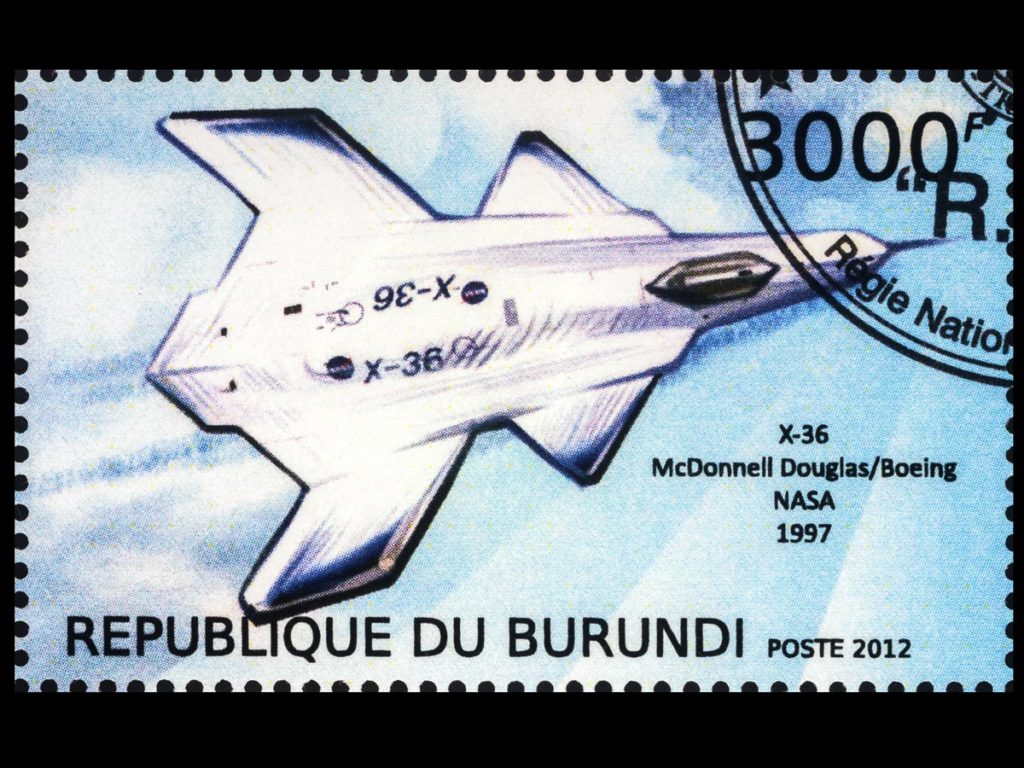The small country of Burundi was part of the European colony of Ruanda-Urundi until 1966; however, as early as 1962, the area began asserting its individuality by overprinting stamps of that colony with the French legend ‘Royaume du Burundi’, or Kingdom of Burundi. In 1962, Burundi began issuing its own proper stamps inscribed with the same French phrase.
In 1965 Burundi issued a remarkable set of coin-like stamps on embossed gold foil. Sets of these stamps are very affordable, though not exactly ubiquitous in sales listings. However, there are usually a few to choose from at any given time.
In 1967 Burundi achieved full independence and ended its monarchy. At first, stamps from the kingdom were overprinted ‘République du Burundi’; new stamps with this inscription soon followed. The inscription is still used to this day, though some stamps use only the word BURUNDI.
Browse 213 current Burundi stamps and postal collectibles for sale offers here
Burundi has courted the international stamp collectors’ market with an array of maximum cards, souvenir sheets, and interesting commemorative issues. There are also large numbers of covers available, as well as the usual collectible philatelic items such as full stamp sheets, imperforates, semi-postals (of which the coin-like gold foil coins were some of the first for Burundi), airmail items, error stamps, and more.
More about Burundi stamp history
Burundian stamp history reaches back, depending on how you approach your collection, to 1893, 1899, 1926, 1945, 1962, or 1967. The modern state of Burundi has issued its own stamps since 1962.
Burundi as part of German East Africa 1893 — 1916
More: German East Africa stamps
Colonial German East Africa was established in 1885, and issued its first stamps in 1893, in fact German stamps with overprints. These are the earliest stamps that could be considered Burundian stamps, although that may be a stretch for some collectors as Burundi didn’t actually become part of the colony until 1899 — and that was against the wishes of the Burundian king who grudgingly agreed to German suzerainty after a struggle. Soon after incorporating Burundi, German East Africa issued its “yacht” stamps, depicting the Kaiser’s boat and inscribed “Deutsch-Ostafrika”. These stamps can be had rather easily for low prices, though some rare pieces go for thousands of dollars.
More: Rwanda rare stamps for philatelists and other buyers
British occupation and Belgian suzerainty 1916 — 1924
During World War I, Britiain and Belgium conquered Burundi, and each issued their own stamps:
Britain: Used stamps from the Nyasaland Protectorate (modern Malawi), overprinted “NF”, then stamps from Uganda overprinted “G.E.A.”.
Belgium: Used stamps from the Belgian Congo (modern Democratic Republic of the Congo), overprinted with “RUANDA URUNDI” and “EST AFRICAIN ALLEMAND/OCCUPATION BELGE/DUITSCH OOST AFRIKA/BELGISCHE BEZETTING”.
Ruanda-Urundi 1924 — 1962
More: Ruanda-Urundi stamps
From 1924 to 1962 Burundi and Rwanda were united in an entity called Ruanda-Urundi, and again the postal history was changed.
League Of Nations Class B Mandate 1924 — 1945
Ruanda-Urundi became an internationally-recognized Belgium territory in 1924. During this period that lasted through World War II, stamps from the Belgian Congo, overprinted with “RUANDA URUNDI” or “RUANDA URUNDi“ (with a lower-case ‘i’) were used, as were actual dedicated Ruanda-Urundi stamps.
Uganda rare stamps for philatelists and other buyers
United Nations trust territory 1945 — 1962
After WW2, the United Nations was formed and Belgium agreed that it would begin the process of giving Ruanda-Urundi its independence. During this time, Ruanda-Urundi stamps continued to be issued, including some striking designs that appeal to collectors of Rwanda, Burundi, or Africa-in-general stamps to this day.
Independence 1962 —
Both Rwanda and Burundi finally became independent and autonomous in 1962. Philatelically speaking, the transition was slow: in Burundi, old Ruanda-Urundi stamps were used, overprinted with “Royaume du Burundi”, then stamps were issued with that phrase on them. In 1967, Burundi became a republic. The modern state of Burundi has persisted to the modern day.










